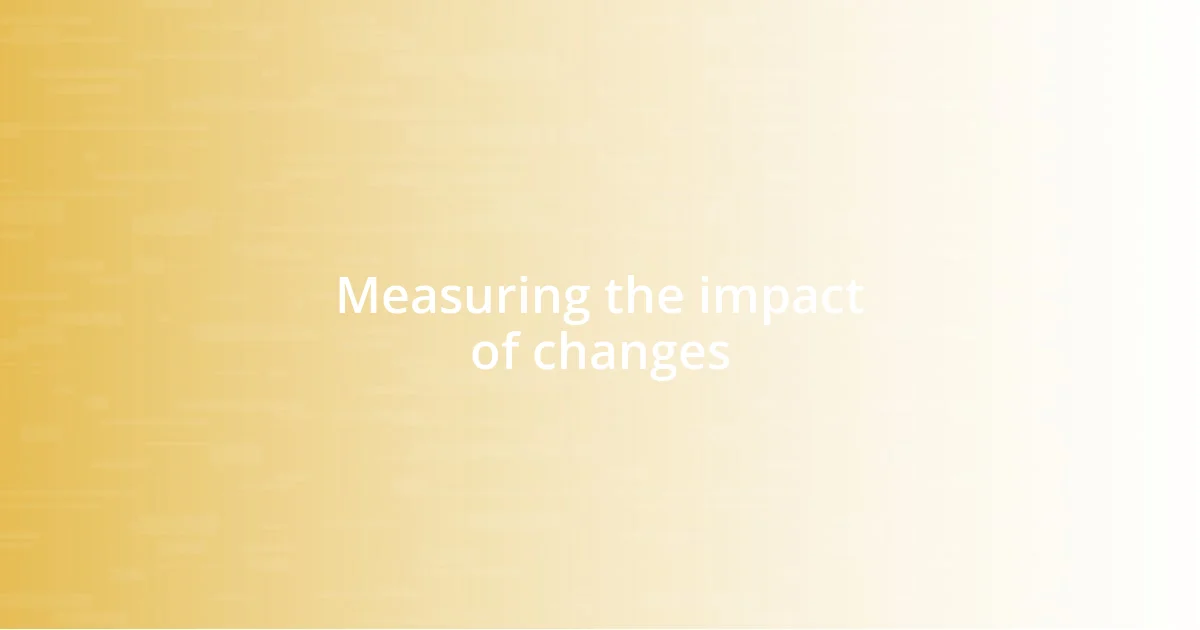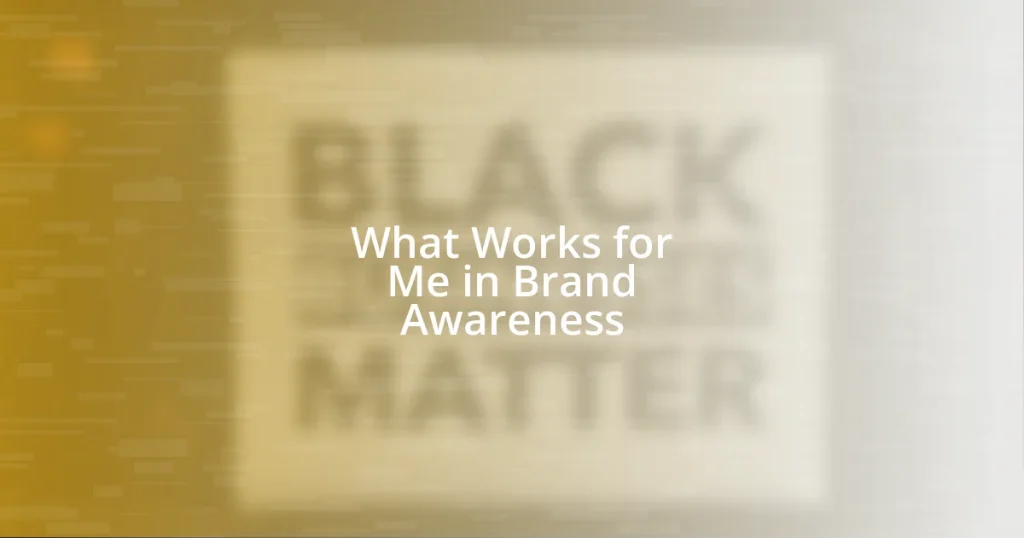Key takeaways:
- Failed brand overhauls often stem from a disconnect between the brand’s changes and its core audience, as seen in cases like Gap, Tropicana, and Coca-Cola’s New Coke.
- Successful brand changes require stakeholder engagement, clear communication, and the ability to pivot based on feedback and market readiness.
- Continuous monitoring and analysis of key performance indicators (KPIs) are essential to understand the impact of changes and to adapt strategies based on customer perceptions.

Lessons learned from failed overhauls
When I think about failed brand overhauls, I can’t help but recall the infamous Gap logo redesign in 2010. The new logo was met with an overwhelming backlash, leading to a swift retreat back to the classic design. It reminds me of how easily a brand can misread its audience. Have you ever felt a company’s change didn’t resonate with what they stood for? That disconnect can be detrimental.
Another eye-opener for me was the rebranding of Tropicana. They changed their packaging, thinking that a sleek, modern design would attract new customers. Instead, loyal fans felt it lost its identity, dropping sales by nearly 20%. It makes you wonder, doesn’t it? How often do brands lose sight of the very essence that drew customers in the first place?
Lastly, take a moment to consider the misstep of Coca-Cola’s New Coke in the 1980s. The attempt to reinvent their classic formula was met with such a negative reaction that they had to revert immediately. This taught me that sometimes what we perceive as improvement can actually alienate our core fans. Why fix what isn’t broken? The heart of a brand often lies in its authenticity.

Implementing changes in your brand
Implementing changes in your brand requires careful consideration and a solid strategy. From my experience, I’ve seen brands thrive or falter depending on their approach to change. It’s essential to involve your core audience in the process. I once consulted for a small business that wanted to refresh its image. They engaged their loyal customers through surveys and feedback sessions, which not only informed their decisions but also fostered a sense of loyalty and investment.
Here’s what I’ve learned about making these changes effectively:
- Assess and align: Analyze how changes fit within your brand’s core values and mission.
- Engage stakeholders: Involve employees and customers early on to gather insights and foster support.
- Communicate clearly: Share your reasons behind the changes to maintain transparency.
- Test before launch: Use focus groups or soft launches to gauge initial reactions.
- Be prepared to pivot: Stay agile and ready to adjust based on feedback post-launch.
When I recall a branding shift I experienced at a tech company I worked with, it struck me how they underestimated the importance of timing. They launched a bold new initiative without gauging market readiness, and the confusion that followed was palpable. It taught me that timing, coupled with a clear vision, can make or break a brand overhaul. Understanding your audience and staying true to your roots is key to successfully implementing changes.

Measuring the impact of changes
Measuring the impact of changes is crucial for understanding the effectiveness of any overhaul. During one of my projects, I implemented a brand refresh and decided to track key performance indicators (KPIs) like customer engagement and sales before and after the launch. It was fascinating to see how even subtle tweaks could shift consumer perception, sometimes in unexpected ways. Have you ever wondered how small changes can create significant ripples in a brand’s footprint?
I vividly remember analyzing customer feedback following a recent marketing campaign I led. We gathered both qualitative and quantitative data, which revealed insights I hadn’t anticipated. It struck me how subjective perceptions could affect overall performance. For instance, while one group adored the fresh colors, another felt they strayed too far from the brand’s traditional palette. It’s a reminder that listening to the audience can illuminate paths for improvement that raw metrics alone might miss.
One vital lesson I embraced is the importance of continuous monitoring. After rebranding a local café, the early response was overwhelmingly positive, but three months down the line, some patrons expressed nostalgia for the original branding. This feedback prompted us to adapt certain elements of the new design while retaining the modern feel. Isn’t it intriguing how the journey of a brand is never truly finished? Each change leads to another wave of responses, evolving perceptions, and opportunities for meaningful connections with customers.















